“Knees Over Toes Lunge" Coaching Guide for F45
The most detailed coaching guide for this exercise ever.
1 of 10: Intro
This week, F45 rolled out a “Knees Over Toes Lunge” to their 1,000+ gyms, so even if only a handful of people who read this know an F45 coach or member, this could be helpful.
That being said, this won’t be “just another knees over toes article.”
I’m going to make sure this is the most detailed coaching guide there’s ever been in written form for this exercise
.
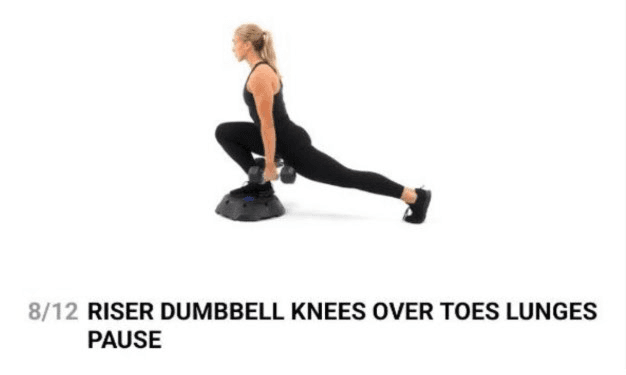
2A of 10. Risers, F45
All F45 gyms have some form of risers.
The simplicity for this exercise is that the higher the risers, the easier the strength and flexibility.
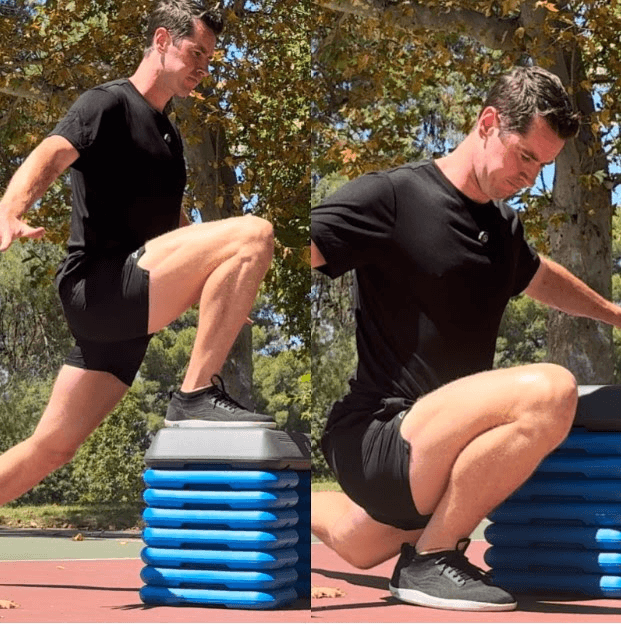
2B of 10. Risers, Bumpers
Since there are over 10,000 CrossFit gyms, and they all have bumper plates, it’s worth noting that those can also act as a riser system.
CrossFit gyms also have PVC pipes for learning weightlifting technique, and these can act as balance and assistance.
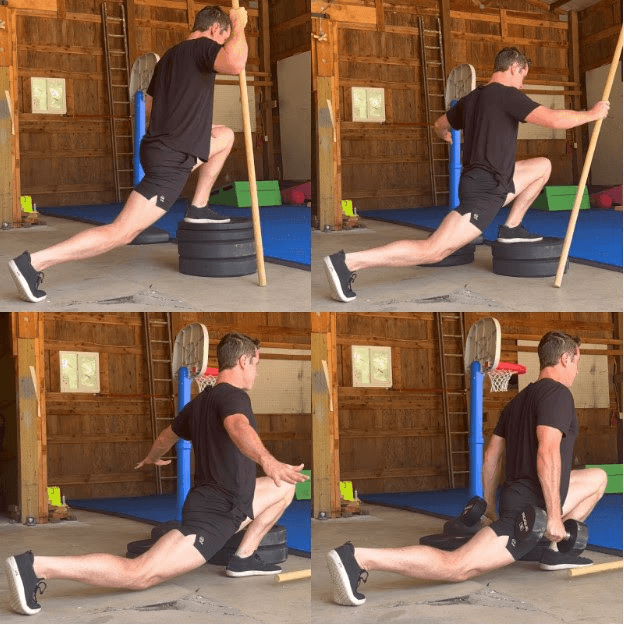
2C of 10. Risers, No Gym
Without a gym, a stairwell is a near-perfect progression device!
You’ve got steps for elevation and rails for balance and assistance.
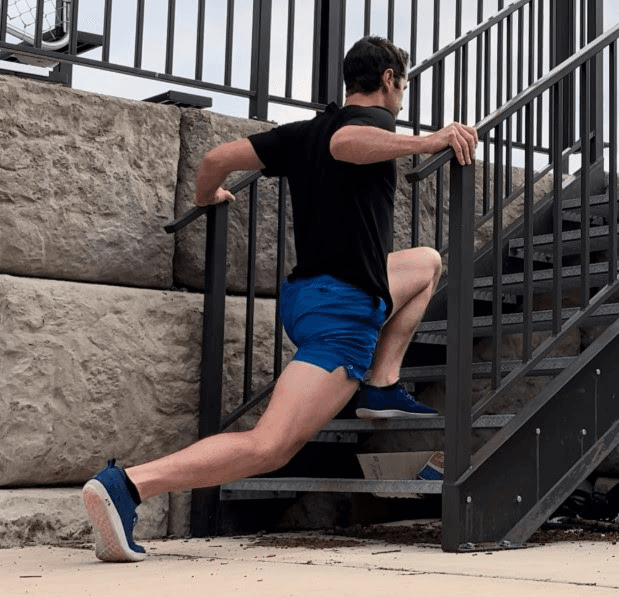
3A of 10. Stance Width
I’m using about a hip-width stance - not standing on a tightrope. Nothing “bad” about that, but loss of balance can interfere with the purposes of the exercise, and hip-width gives you better balance.
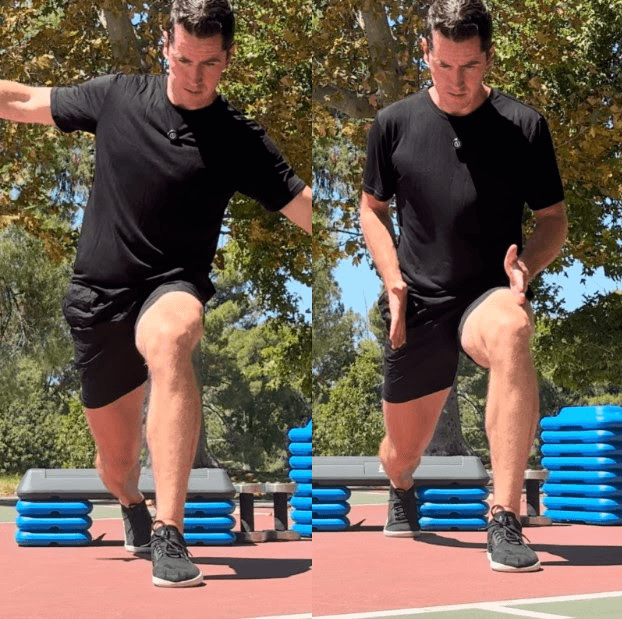
3B of 10. Stance Length
There’s no simple way to know exactly how long your stance should be, so feel free to wiggle around the back foot until you sink into what feels good for you,then begin your set.
It’s also worth knowing that as you go lower, your stance will have to get longer.
This all gets easy with experience.
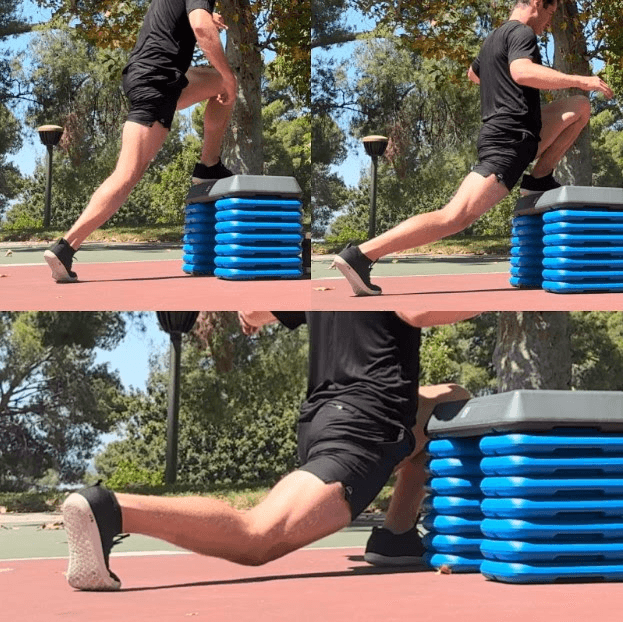
4A of 10. Back Foot, Heel Straight or Out
If the back heel turns inward, the stretch shifts away from the hip flexors and to the groin. The pressure also reduces on the front leg.
That’s all fine, but that’s a separate exercise.
So heel straight or even outward ensures a stretch on the hip flexors, with consistent load on the front leg. (In fact, heel out = even more hip-flexor stretch!)
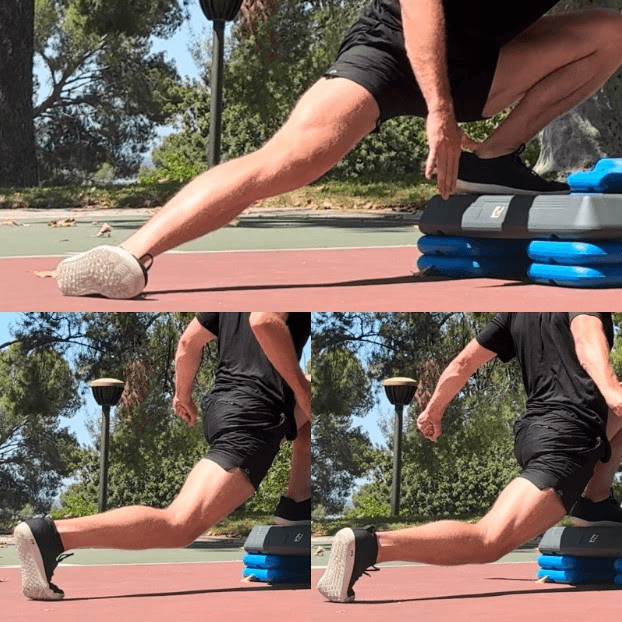
4B of 10. Back Foot, On Toes Throughout
I like the back foot to remain on the toes throughout the exercise, because when you relax that back foot to the heel, you lose tension on the front leg. This can result in loss of balance and rhythm.
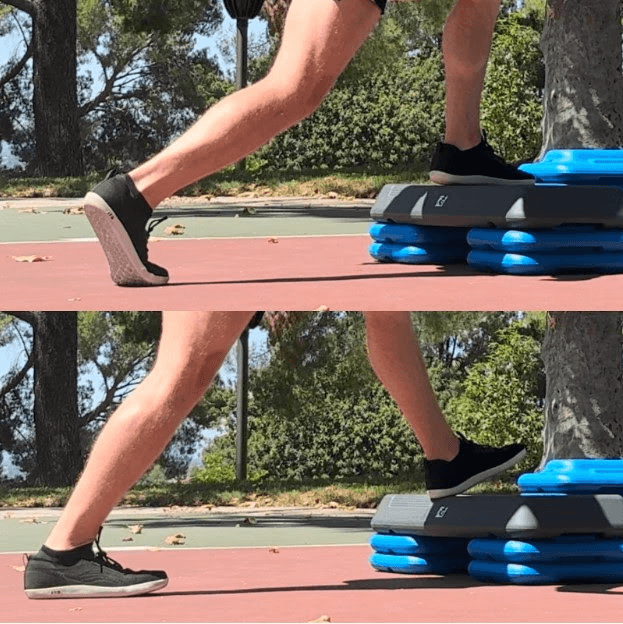
5 of 10. Back Knee
I coach the back knee not to touch the floor.
Nothing wrong with it touching, but this gives a barometer of mobility.
If your back knee is touching the floor, simply elevate the front foot more.
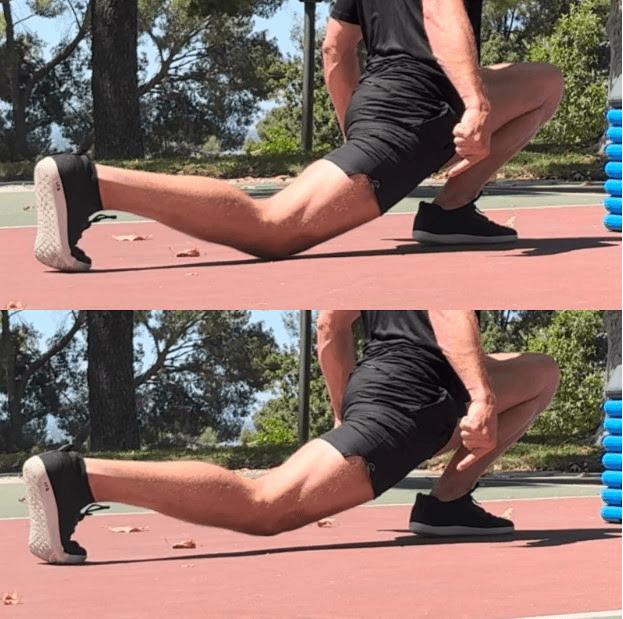
6 of 10. Torso Position
I don’t coach this too strictly, but I do look for unnatural straining forward for depth, or straining backward for posture.
There’s nothing terribly wrong about straining forward or backward, but I’d rather elevate the front foot until the person can do the exercise with a torso position that feels natural for them. That way we have a consistent form to progress with.
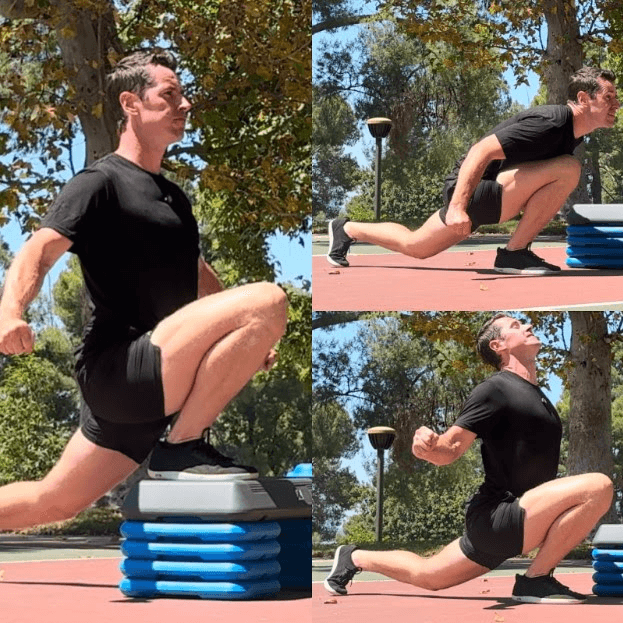
7A of 10. Front Leg, Lockout
There’s no need to lock out the front leg, and that can even lose balance and tension.
The real work on this exercise is from about 90 degrees downward.

Also be aware that the lower you go, the more range of tension you’ll have at the top. In other words, the more risers you use, the more you’ll “stay” in the bottom zone in order to keep tension.
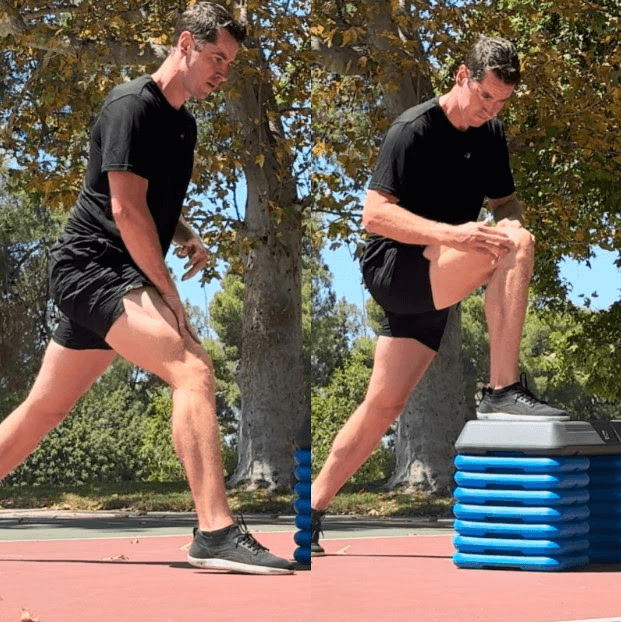
7B of 10. Front Heel
People have varying levels of ankle mobility, so if the front heel is lifting a bit, I don’t overcorrect it.
However, if the person appears or expresses awkwardness, then I would simply elevate the front foot until the person feels more stable.

8A of 10. Advanced, Load
Dumbbells are my favorite method for loading because they get safer as you go lower.
The deeper you go, the closer the dumbbells get to the floor, making it easier to let them go if you had to.
On the other hand, a bar on the back gets scarier as you go lower, so I’ve seen that commonly lead to worsened form as people go heavier.
Many types of loading can work. I simply want the same form when you go heavier.

8B of 10. Advanced, Lunge
Technically speaking, the above exercise is a “split squat.”
A “lunge” usually refers to dropping into a split squat, and then stepping forward into the next split squat.
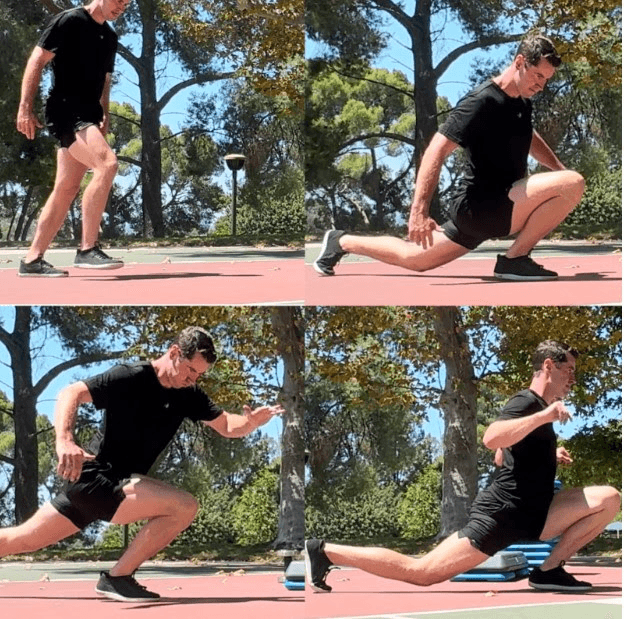
A full range of motion lunge is a challenging but rewarding progression from the full range of motion split squat.
Two intentions become particularly important.
First, pushing with the back toes.
Then, keeping the front knee strong as you go forward (weaker knees will shoot back instead of staying over the toes).
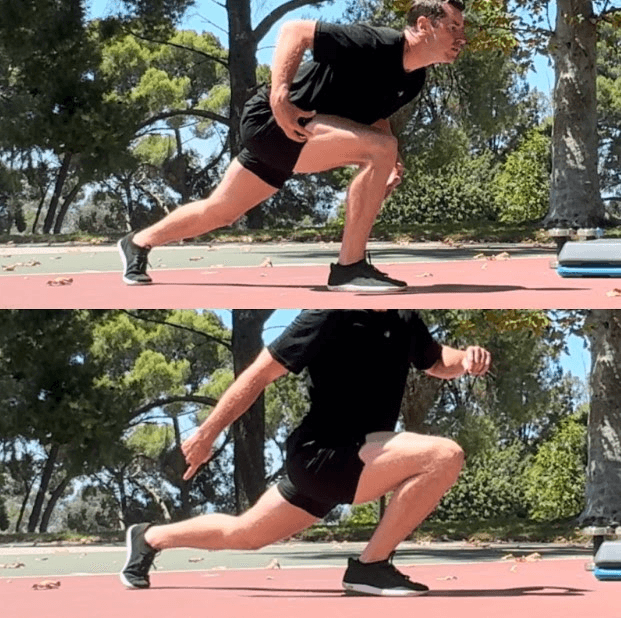
I must stress that this is an advanced exercise, with pros and cons.
The con would be someone rushing the deep lunge before mastering a pain-free deep split squat.
But the pro is the ability to build exceptional knees, legs, and mobility with zero equipment!!!
9A of 10. Unique Benefits, Exercise
Most exercise programs include some form of squat.
But traditionally, almost none of them has a form of squat where you control the deeper range.
In the sport of powerlifting, you use maximum weight, thus stopping about halfway down.
In the sport of Olympic weightlifting, you have to get the weight off the floor and then duck under it, so you’re getting a deep squat - but violently.
Both of those methods have benefits, but the result is that 99+% of modern exercise programs lack a controlled method of addressing your full leg ability at your pain-free level (since the sports shaped the exercise landscape).
Now factor in how you’re addressing one side at a time and you add even further benefits, since a common sense balance between your left and right ankles, knees, and hips helps reduce lower body and lower back injuries. This exercise allows you to really slow down, learn yourself, and even out these qualities to a sensible degree.
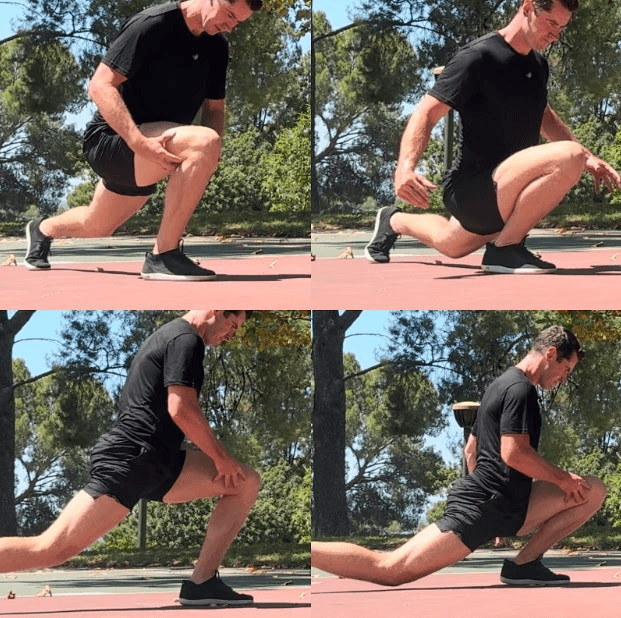
9B of 10. Unique Benefits, Life
Modern life involves a lot of sitting and not a lot of sprinting.
With one exercise, we can build lost ability below the chair while restoring lost flexibility in the hips!
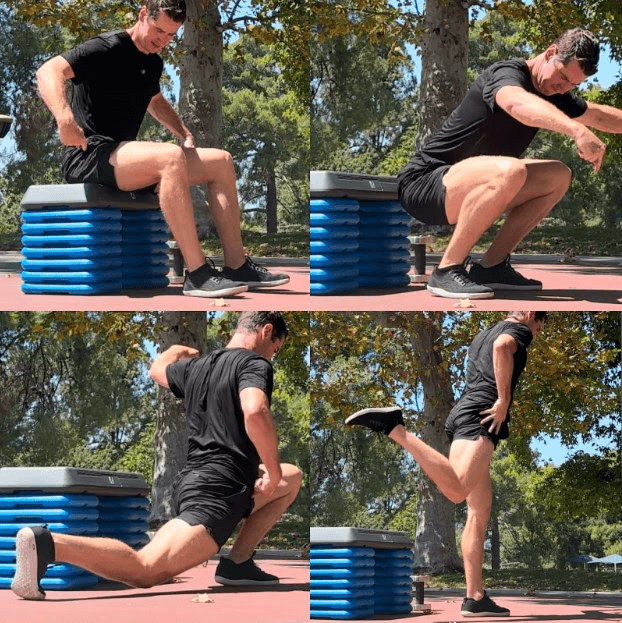
10 of 10. DEMAND v ABILITY!
This is just a tool.
A body doesn’t have infinite ability.
Anyone could still get hurt in life.
But I have a firm reality on Demand v Ability because I started at low levels of ability.
I was on painkillers and told I needed more knee surgery. I quit my sport.
But then I slowly started increasing my ability, rather than the norm of avoiding it.
I’m now in year 13 of working on this exercise an average of once per week, NEVER working through pain.
I regained my sport and have been over 10 years without a knee setback, despite dunking now (an intense knee activity) after not being able to dunk prior.
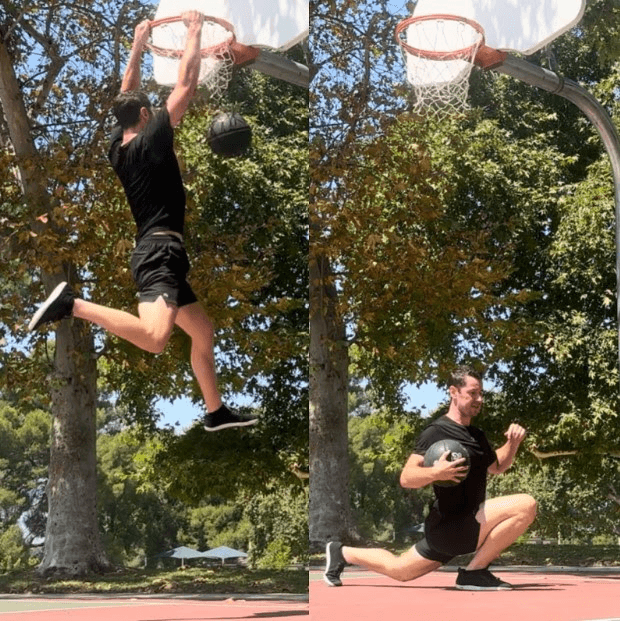
At 36, my wife is pleasantly surprised how easy and pain-free skating still is for her.
This is the exercise she has done the most in our 15-year relationship.
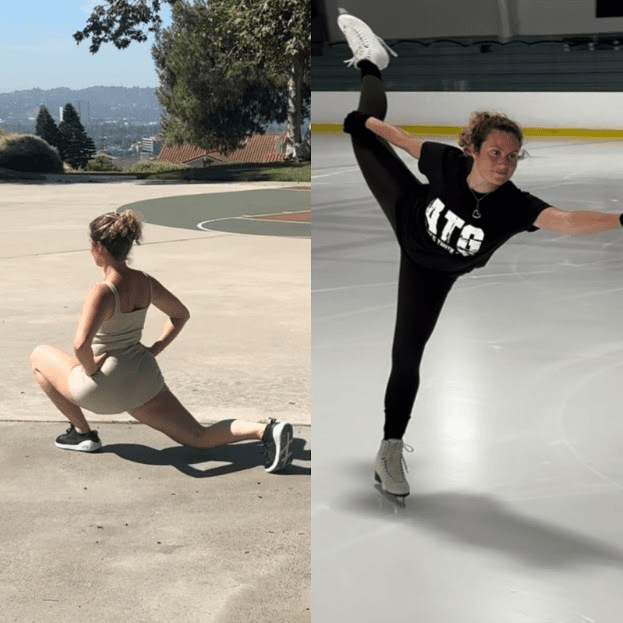
And at 71, my mom plans to sprint till she’s 100!
She’s been working on this exercise at her pain-free level for 8 years.
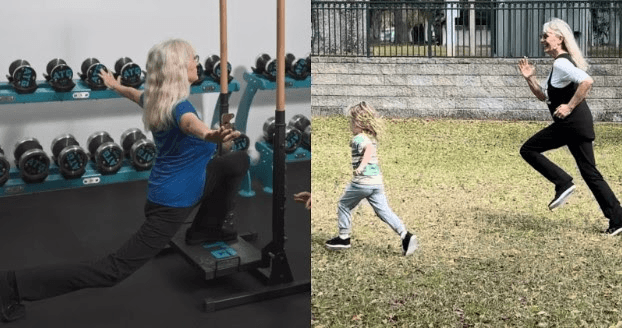
I hope this adds to your own skill at improving Ability while reminding you that life’s Demands are still their own beast.
We don’t have infinite protection, but with greater skill at Ability, we can better handle life’s Demands.
Yours in Solutions,
Ben
Sign up for free knowledge
We send out new articles weekly.